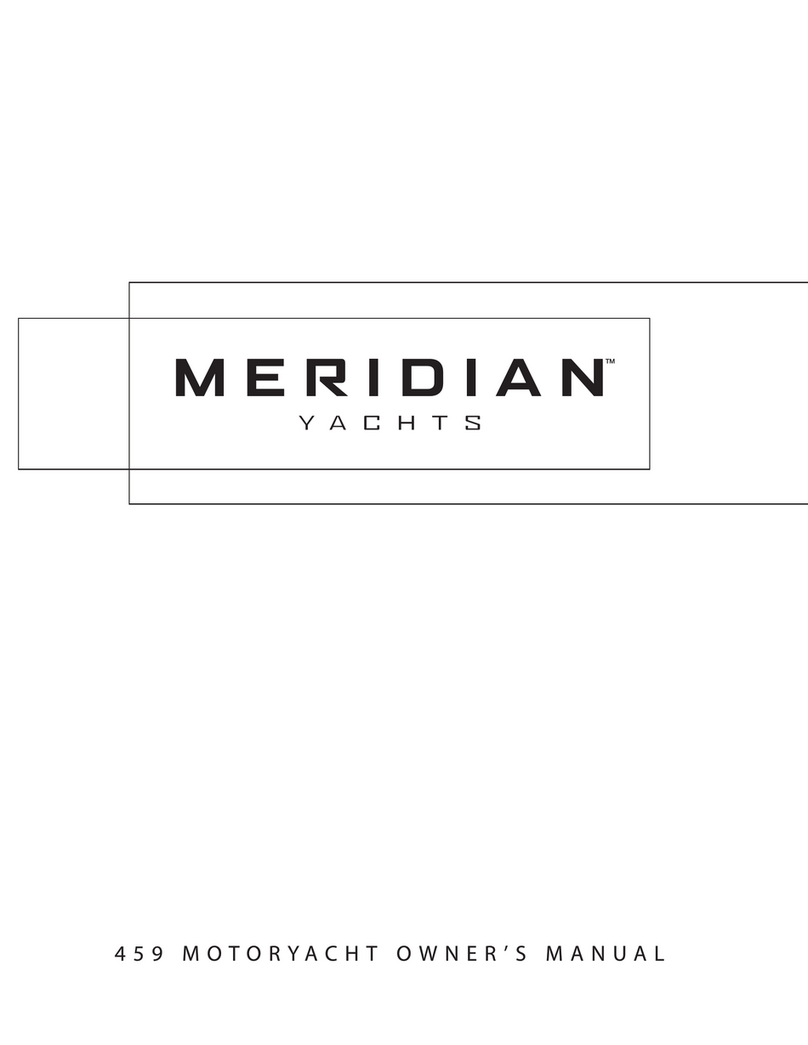
1. The central vacuum system is a great way to clean you the cabin thru out the
vacation.
2. The vacuum system attachments are located in the storage cabinet next to the larger
sofa area as you come down the stairs.
3. Ensure the electrical breaker is turned on.
4. The central vacuum port is at your feet as you step down and are heading into the v‐
birth – front bedroom. It is located under the flap on the left hand side by your feet.
5. To turn on the system, simply push in the hose and the system will work.
6. Some of the attachments have battery activities devices.
7. There is a charger that can be plugged in at any of the general outlets thru the
vessel.
Vessel’s Upper Helm: A good overview and image is located on page 15 of the owner’s
manual.
Steering Wheel:
1. The steering wheel can be in two positions. The up position is used in most
operating conditions.
2. The steering wheel is used while cruising in open water. Typically in harbors, the
use of transmission, thrusters and power are used for manufacturing the vessel.
Starting the Vessel:
1. Turn on the engine room light on the main electrical panel board. Enter the engine
room that is located on the main salon floor. The hatch is lifted by using the nylon
strap at one of the ends. Store hatch in the vertical position against the main
electrical panel cabinet. Visual inspection of both diesel engines. No lose belters,
major leaks, standing water, etc… are seen. Check the engines oil level. The oil
dipsticks are easy to turn and removed. You must use two hands to hold the based
and twist the top – easy to reach. Check oil, use paper towel. If is level is low, add
the motor oil located in the back locker & funnel provided. (Details on how to add
oil section below section) Confirm all systems appear to be in good working order –
hoses, filters, ‐ fuel filter should be clear red fluid, etc… Close engine room hatch.
Turn on the engine room blowers for a minimum of three minutes – Upper helm.
Double check to confirm the vessels transmission is in neutral and the power is in
the low position. Within the main electrical panel cabinet there are two keys. Turn
on, you will hear a buzzer sound until the engine are running in an idle speed. Move
to the top helm area. After the engine’s pre‐heating operation is completed, the two
lights on the dash will turn off. Once the lights are off, start engines. Hold the start
buttons down for a maximum of five seconds. Stop. Try again. Repeat as required.
The port side starts up within one or two attempts. The starboard side starts up
within up to five attempts. The engines will have a little white smoke for about five
minutes. If the boats continues to smoke heavily or black or colored smoke, please
schedule a mechanic for inspection at the next full service marina in your trip. The
engine blower shall remain on until the vessel is traveling in open water at an rpm
of 1000 or more.




























